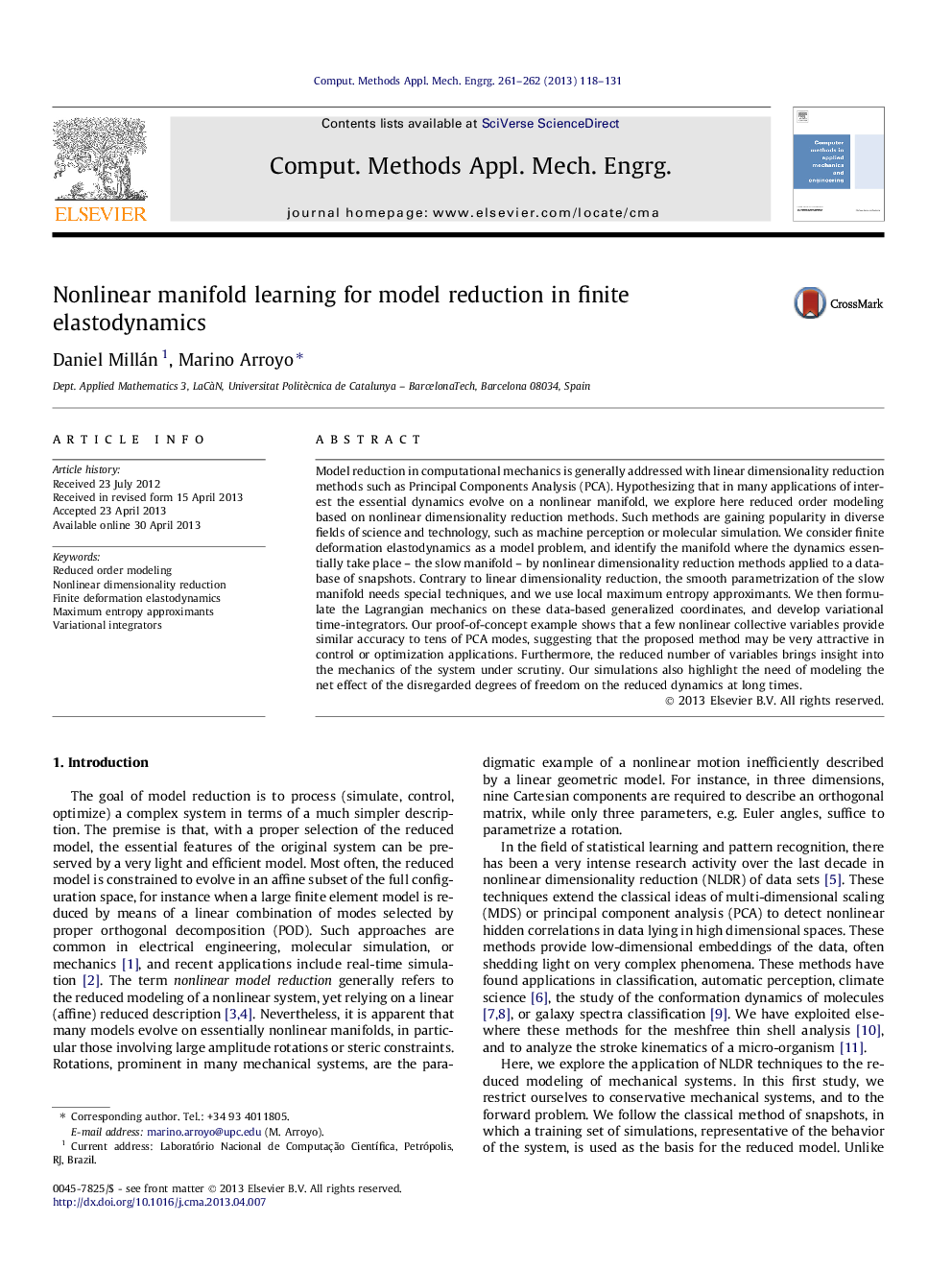| Article ID | Journal | Published Year | Pages | File Type |
|---|---|---|---|---|
| 498107 | Computer Methods in Applied Mechanics and Engineering | 2013 | 14 Pages |
Model reduction in computational mechanics is generally addressed with linear dimensionality reduction methods such as Principal Components Analysis (PCA). Hypothesizing that in many applications of interest the essential dynamics evolve on a nonlinear manifold, we explore here reduced order modeling based on nonlinear dimensionality reduction methods. Such methods are gaining popularity in diverse fields of science and technology, such as machine perception or molecular simulation. We consider finite deformation elastodynamics as a model problem, and identify the manifold where the dynamics essentially take place – the slow manifold – by nonlinear dimensionality reduction methods applied to a database of snapshots. Contrary to linear dimensionality reduction, the smooth parametrization of the slow manifold needs special techniques, and we use local maximum entropy approximants. We then formulate the Lagrangian mechanics on these data-based generalized coordinates, and develop variational time-integrators. Our proof-of-concept example shows that a few nonlinear collective variables provide similar accuracy to tens of PCA modes, suggesting that the proposed method may be very attractive in control or optimization applications. Furthermore, the reduced number of variables brings insight into the mechanics of the system under scrutiny. Our simulations also highlight the need of modeling the net effect of the disregarded degrees of freedom on the reduced dynamics at long times.
